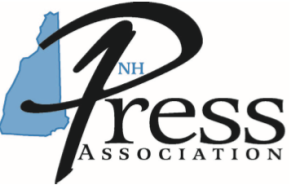
The Granite State firearms season opens Thursday, November 12 while the Green Mountain State hunt opens Saturday, November 15.
I did not get out with my bow or muzzleloader in either state as I usually do. Between medical appointments for Linda and me, board meetings and working out of state, I just never found the time. I barely managed to get the property ready for winter.
Come Saturday morning I will be in one of my tree stands. Linda has chemo on Thursday and wears a pump for forty-eight hours. She has to go to the hospital to get her pump disconnected at 10:30 Saturday so my morning hunt will be short, but I will again be in a stand in the afternoon.
Vermont’s season begins Saturday and ends Sunday, November 30.
A hunter may take one legal buck during this season if they did not already take one during the archery deer season. The definition of a legal buck depends on the Wildlife Management Unit. A map of the WMUs is on pages 24 and 25 of the 2025 Vermont Hunting & Trapping Guide available from license agents and at highway rest areas.
In WMUs C, D1, D2, E1, E2, G, I, L, M, P, and Q a legal buck is any deer with at least one antler three inches or more in length.
In WMUs A, B, F1, F2, H, J1, J2, K, N, and O a legal buck is any deer with at least one antler with two or more antler points one inch in length or longer.
Vermont hunting licenses include a buck tag for this season and a late season bear tag (for Nov. 15-23).
Hunters are required to report deer in person at a big game reporting station during the regular season. This requirement allows biologists to collect important information from as many deer as possible.
Biologists are collecting middle incisor teeth from all regular season bucks to evaluate regional differences in ages and antler characteristics as well as to help estimate population size, growth rate, health, and mortality rates. Each tooth will be cross sectioned to accurately determine the deer’s age, and the results will be posted on the Fish and Wildlife website next spring.
“Knowing the ages of harvested deer is critically important, and more information allows us to make better management decisions,” said Nick Fortin, Vermont Fish and Wildlife’s deer project leader. “To accurately estimate deer numbers, and to better assess our current management strategies, we really need to get teeth from as many deer as possible.”
Hunters who get a deer on opening weekend can help Vermont’s deer management program by reporting their deer at one of the biological check stations operated by Fish and Wildlife Department. They include: Lead & Tackle – Lyndonville, Maplefields – Plainfield, R&L Archery – Barre and Wright’s Sport Shop – Derby.
Hunters who do not go to a biological reporting station are asked to provide a tooth from their deer. Tooth envelopes and tooth removal instructions are available at all big game reporting stations.
New Hampshire’s deer season runs from November 12 through December 7 in most of the state. In Wildlife Management Unit A, the northernmost in New Hampshire, the season closes on November 30.
For the third year, deer hunters have the option of registering their harvest online this fall. To register your deer online, or to learn more about what to do following a successful harvest, visit www.wildlife.nh.gov/hunting-nh/deer-hunting-new-hampshire/how-register-your-deer. Physical registration stations will also remain an option for those who prefer the experience of registering in person.
To allow for collection of biological data, online registration will not be available during the first 3 days of firearms season, November 12, 13, and 14. Hunters must register their deer in person at a registration station on these days.
Hunters are reminded not to use urine-based lures. These products can potentially spread Chronic Wasting Disease, a neurological disorder that is always fatal to white-tailed deer and moose. Synthetic lures are strongly recommended. If the bottle or package does not say “synthetic” the product is likely natural urine.
Bits and Pieces
The Vermont Fish and Wildlife Department is asking hunters to participate in its annual deer hunter effort and sighting survey. The survey asks hunters to record how many hours they hunted and how many deer, moose, bears, or other wildlife they saw each day they hunted. This information helps the department evaluate how hunting pressure and the number of these animals varies around the state.
The easiest way to complete the survey is to use the Deer Hunting Log feature in the Vermont Outdoors mobile app. The app allows hunters to track their effort and wildlife sightings each day during any of the 2025 deer hunting seasons.
Vermont Outdoors is available through the App Store or Google Play.
A web-based version of the survey will also be available on Fish and Wildlife’s website.
***
Bear biologist Jaclyn Comeau says. “No matter where you live, it is important for Vermonters to remain diligent about securely storing common bear attractants such as garbage and birdseed until winter conditions arrive and all bears enter their dens. We recommend waiting until December when snow is on the ground before putting out bird feeders.”
Vermont Fish and Wildlife has lots of helpful information about living with black bears on its website.
***
The Vermont Fish and Wildlife Department issued 180 moose hunting permits this year, resulting in 68 moose harvested between the October 1-7 archery season and the October 18-23 regular season. Moose hunting was only allowed in Wildlife Management Unit E, in northeastern Vermont.
“Moose are relatively abundant in WMU-E,” says Nick Fortin, the department’s moose biologist. “This high density of moose contributes to high winter tick numbers that can negatively impact moose health and survival. A goal of this year’s hunt was to improve the overall health of WMU-E’s moose population by reducing its density.”
Moose management goals were informed by years of monitoring data and extensive research on moose and winter ticks from the northeastern U.S. and Canada.
Vermont research has shown that chronic high winter tick loads have caused the health of moose in northeastern Vermont to be very poor. Survival of adult moose remains relatively good, but birth rates are very low, and many calves do not survive their first winter.
“This year’s hunt in WMU-E was another step towards achieving a healthy, sustainable moose population,” said Fortin.
Of the 180 permits available, 174 were issued by lottery, to which nearly 6,000 hunters applied. The department reserves the first five lottery permits for Vermont military veterans. Three non-lottery permits are reserved for persons with life-threatening illnesses, and three more are auctioned as a fundraiser for conservation.
***
Vermont Fish and Wildllife’s calendar is available for $15 from Vermont Fish and Wildlife Department with a printable free-shipping mail-in order form on Vermont Fish and Wildlife’s website.
Proceeds from calendar sales contribute to the department’s Habitat Stamp Fund, which helps buy and manage land for Vermont’s wildlife.
***
The 2026 New Hampshire Wildlife Calendar will be loved by anyone who appreciates wildlife and enjoys the outdoors. Every calendar purchase helps support the New Hampshire Fish and Game Department’s work managing the state's natural resources for all to enjoy.
Visit wildnh.com/calendar to purchase calendars online and enjoy free shipping. Or stop by the New Hampshire Fish and Game Department, 11 Hazen Drive in Concord, NH, Monday–Friday, 8 a.m. to 3:45 p.m. to pick yours up in person.
***
The New Hampshire Fish and Game Department stocks certain waterbodies to bolster fall and winter fishing opportunities in a variety of locations.
“We stocked yearling rainbow trout into several lakes in mid-October so that anglers who want to get out on the water this fall have some exciting fishing opportunities” said NH Fish and Game Inland Fisheries Program Supervisor John Magee. “These are Akers Pond in Errol, Cedar Pond in Milan, Big Diamond Pond in Stewartstown, Pearl Lake in Lisbon, and Streeter Pond in Sugar Hill. In November, we also stock post-spawn brook and brown trout into selected waterbodies that don’t have a closed season. These fish can range from 2 to 3 pounds each. Some annual locations include Tewksbury Pond in Grafton, Manning Lake in Gilmanton, and Pleasant Lake in Deerfield. Numbers, dates, and stocking locations vary annually so we always recommend that anglers check the interactive stocking map. I would encourage anglers of all skill levels to take advantage of these and other stocked opportunities throughout New Hampshire.”
Fall and winter anglers chasing trout can find lists of waters that remain open to the taking of these fish all year on the Fish and Game website: For lakes and ponds, visit www.wildlife.nh.gov/fishing-new-hampshire/trout-fishing-new-hampshire/nh-lakes-and-ponds-stocked-trout-and-open-year. For rivers and streams, see www.wildlife.nh.gov/fishing-new-hampshire/trout-fishing-new-hampshire/nh-rivers-and-streams-stocked-trout-and-open-year.
***
Mark Breen reports in the Fairbanks Museum's Skywatch Almanac that on
November 14, 2003: “Rain changed to snow, just a light coating in the valleys, while over the higher terrain, Eden and Warren, VT shared 13 inch totals, while 15 inches was measured in Worcester, VT, and 17 inches had to be shoveled in Stowe, VT.”
On November 17, 2019: “Earliest below zero reading ever in St. Johnsbury; -1°F; -9°F at Saranac Lake, NY.”
Parting Shots
Stupidity is not restricted to the White Mountains. Sunday evening, November 2, Stowe Mountain Rescue was called for a rescue of two young men who ran into trouble on Mt Mansfield. They achieved the summit but had set out late in the day and were unprepared and ill equipt.
They were wearing cotton hoodies and sweatpants. The SMR press release pointed out that, “There’s nothing colder than saturated cotton, which will literally freeze solid and provide zero insulation. “
The two lacked appropriate footgear considering there was 6-8 inches of snow on the trail. They also lacked headlamps.
Syndicated columnist Gary W. Moore may be reached by e-mail at gwmoore1946@icloud.com or at Box 454, Bradford, VT 05033.
copyright 2025 Gary W. Moore
Caption: keep you pets safe by having them wear orange just as hunters do.
Have a story?
Let's hear it!
(802) 757-2773
(603) 787-2444
news@thebridgeweekly.com




